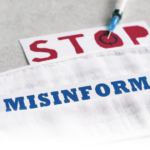Peer Review 101
The Rheumatologist uses peer review, after a fashion. We just use a very small group of peers. Articles are not typically sent out to an international panel of experts for their review and comment. The associate editors and I read every pitch, every article, every case report, and together, we decide on their merits. For us and for what we do, the system works.
On the other hand, you could easily imagine how the system could break down. I’m not an expert on everything. I wouldn’t be my first choice to review a manuscript on lupus nephritis or the use of CAR-T cells as a treatment for autoimmunity.
Such articles would, ideally, be refereed by other investigators who could say authoritatively whether the article contributed meaningfully to the literature. Someone who had the same level of expertise as the article’s authors. Someone who the authors would consider, you know, a peer.
For something considered so fundamental, peer review has a remarkably short history in academic publishing. The concept of peer review dates back to the 1600s, but it did not become commonplace until much later. Nature started using peer review in 1967. The Lancet did not follow suit until 1976.9
This shift was not due to a sudden change in publishing mores. Rather, the advent of peer review owes most to a single event: In 1959, the Xerox company brought the first commercial photocopier to market. The Xerox 914 weighed 650 lbs. and was prone to spontaneous combustion.10 Despite these flaws, Xerox Corp. couldn’t make the machines fast enough; the company sold thousands of these imperfect machines and simultaneously struck a blow for the democratization of information. Before this technology became commonplace, making a copy of an article was laborious, expensive or both. After the emergence of Xeroxing, anyone could get a copy of an article, with the push of a button.
Now, peer review is commonplace and typically takes place in two phases: When submitted to a journal, an article first goes through a desk evaluation: An editor reviews the article and quickly decides whether the article is worth further consideration. At this stage, articles may be rejected for a host of reasons, mainly technical; the subject of the article may not fall under the journal’s aims and scope, for example, or it may not be formatted correctly.
If an article survives desk evaluation, it moves on to a blind review, in which the manuscript is sent to referees who are experts on the subject matter. The referees make comments, and then make an explicit recommendation to accept or reject the manuscript, or for the authors to make revisions to the manuscript and resubmit for reconsideration.11



